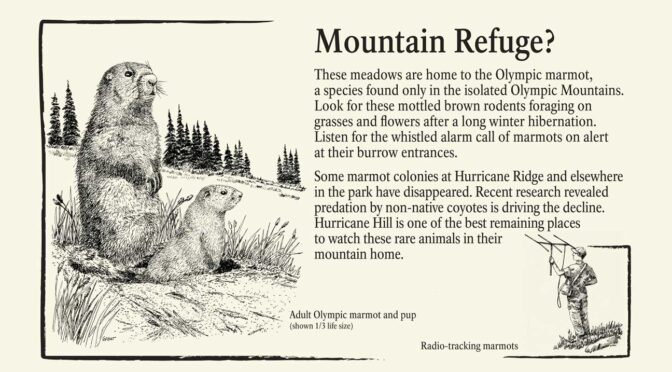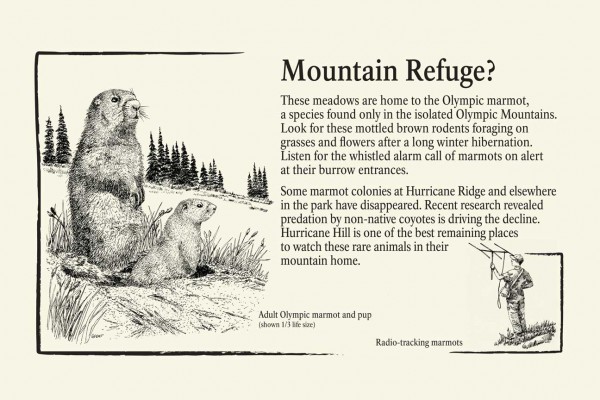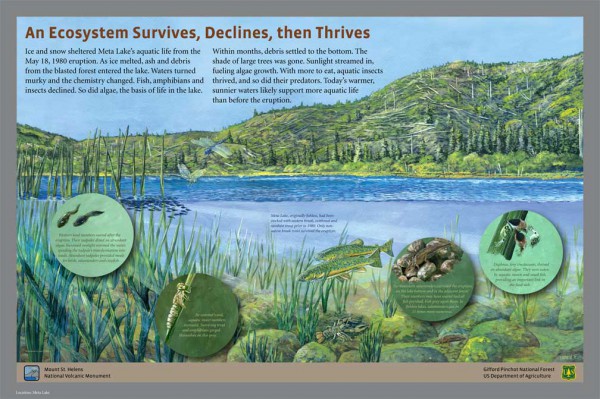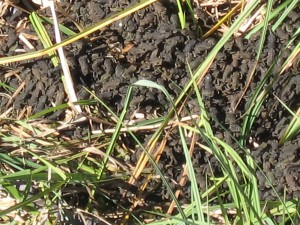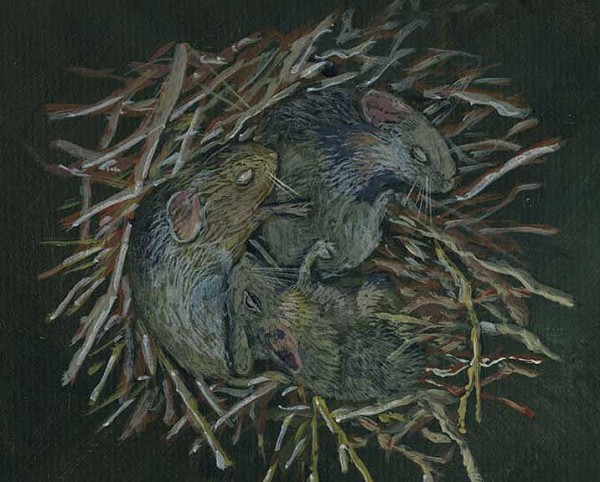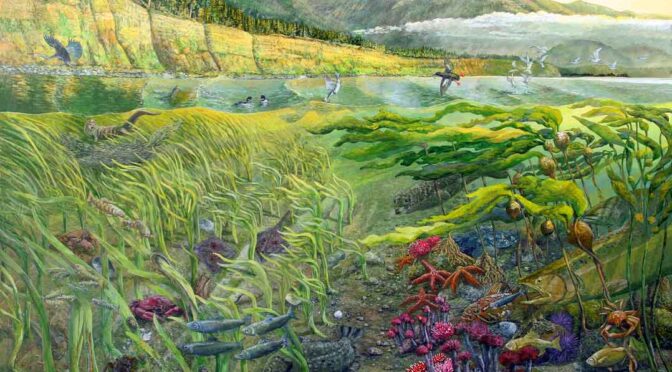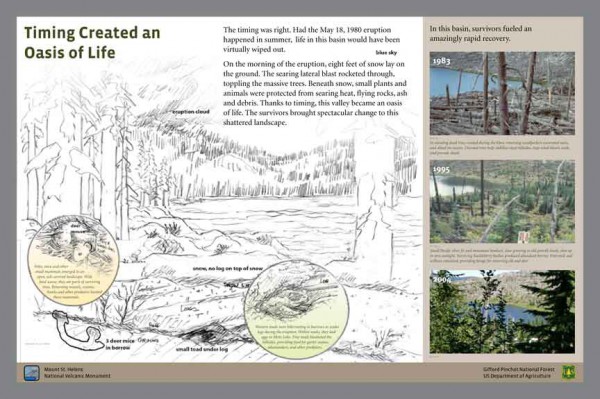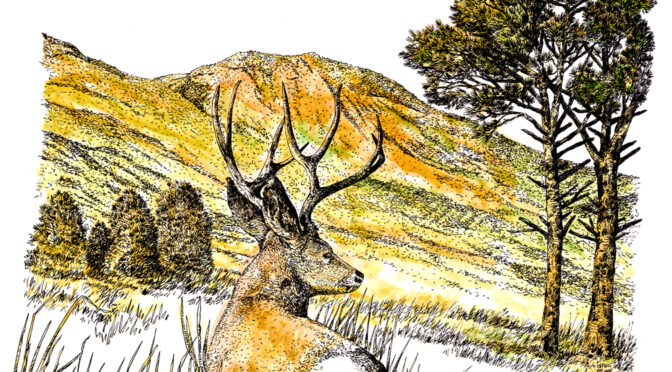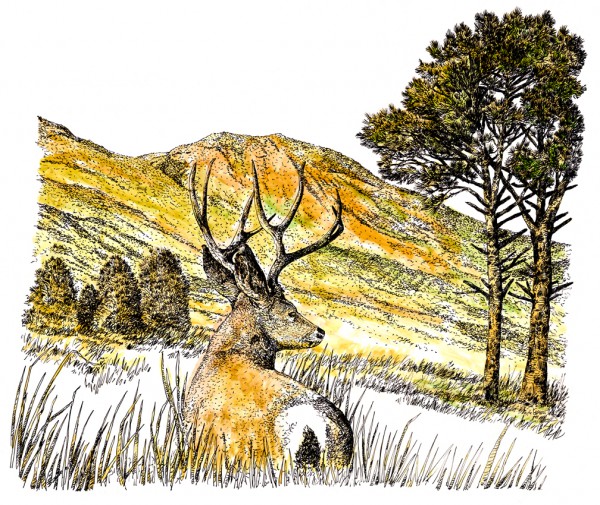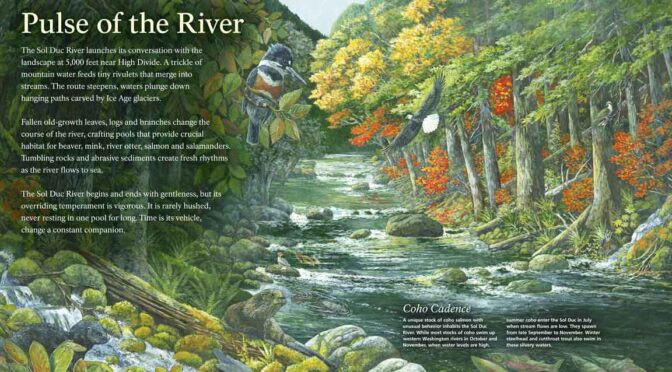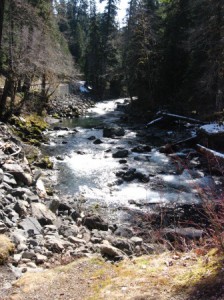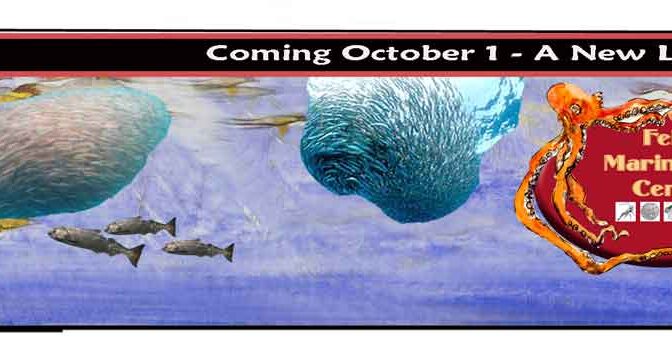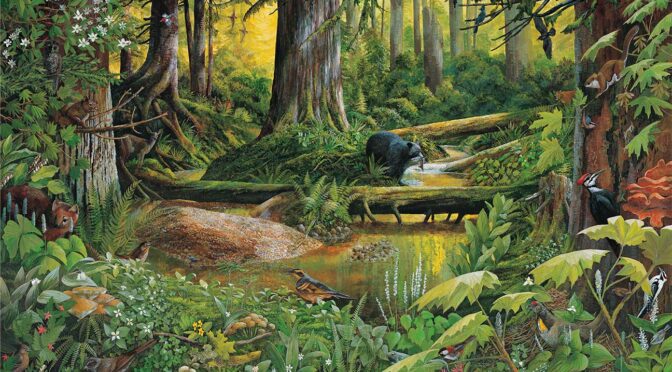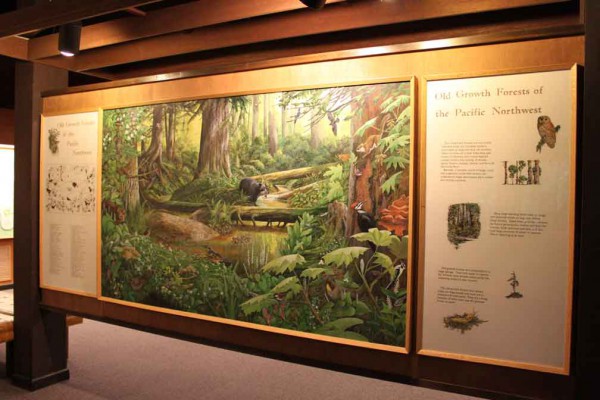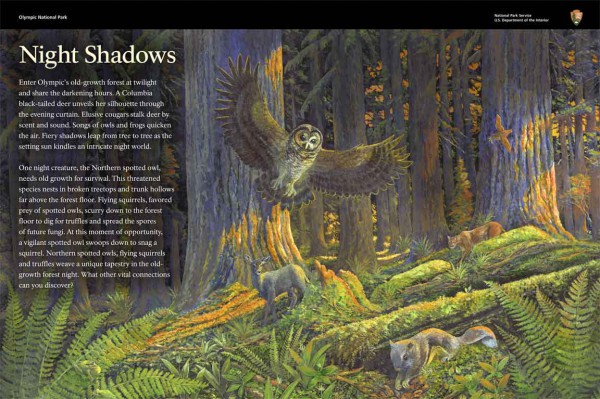A local project this week. Olympic National Park is just to the southwest of us, we see the snow shining on the peaks just a few miles away. The Olympic Peninsula is a biological island, with water on three sides and lowland on the fourth, so Olympic’s alpine is really isolated from the rest of the continent. Because of this, there are at least twenty-three plants and animals that are only found here – although a couple are on Vancouver Island peaks too. Take a walk in the alpine and you’ll see nature you can’t see anywhere else. One of these is the Olympic marmot, a big meadow-living woodchuck that spends its summers eating sedges and grasses as it prepares for the next 8 months of underground sleeping. We often see these guys hanging out on their den “front porches”, watching for preditors. But recently, their meadows have been changing – and not for the better. One might say the neighborhood has been going to the dogs (coyotes).
So this bit of art will alert visitors as they climb the Hurricane Hill trail to watch for a rare critter that is in trouble. Climate Change? Well, the Park might not say this, but I see thousands of brand new little confers invading the upper meadows, where trees haven’t been before. It’s like winters aren’t as harsh, the growing season just a bit longer. More trees equal better cover for lowland coyotes to sneak through as they go after the marmots. And the coyotes are here since the wolves have been exterminated!
For me, it’s another chance to learn more about nature – and figure out how to illustrate it so you can too.
Thanks for reading this week.
Larry Eifert
Click here to go to the online blog this was to.
Click here to go to our main website – packed with jigsaw puzzles, prints, interpretive portfolios and lots of other stuff.
Click here to check out what Nancy’s currently working on with her photography.
